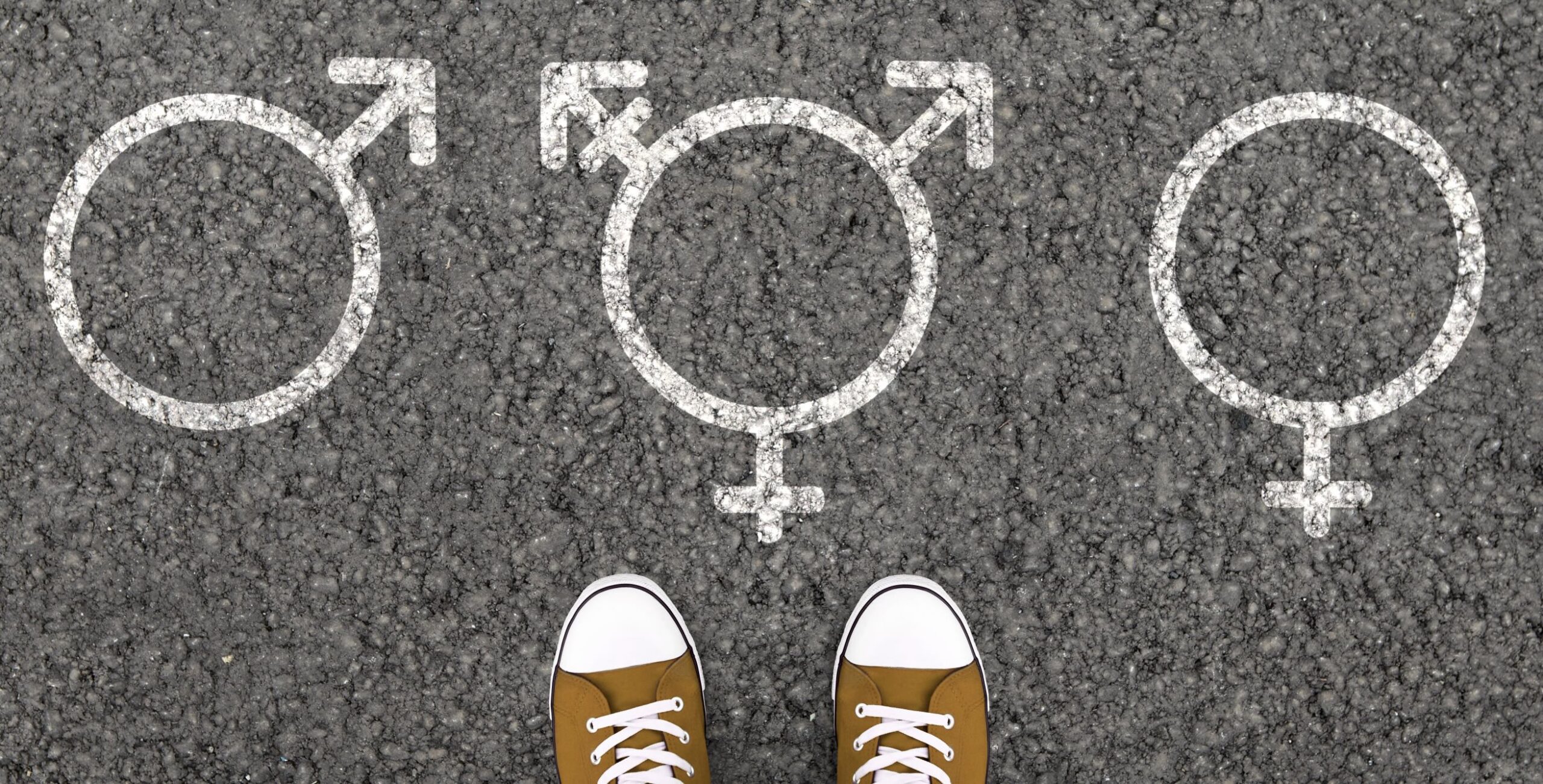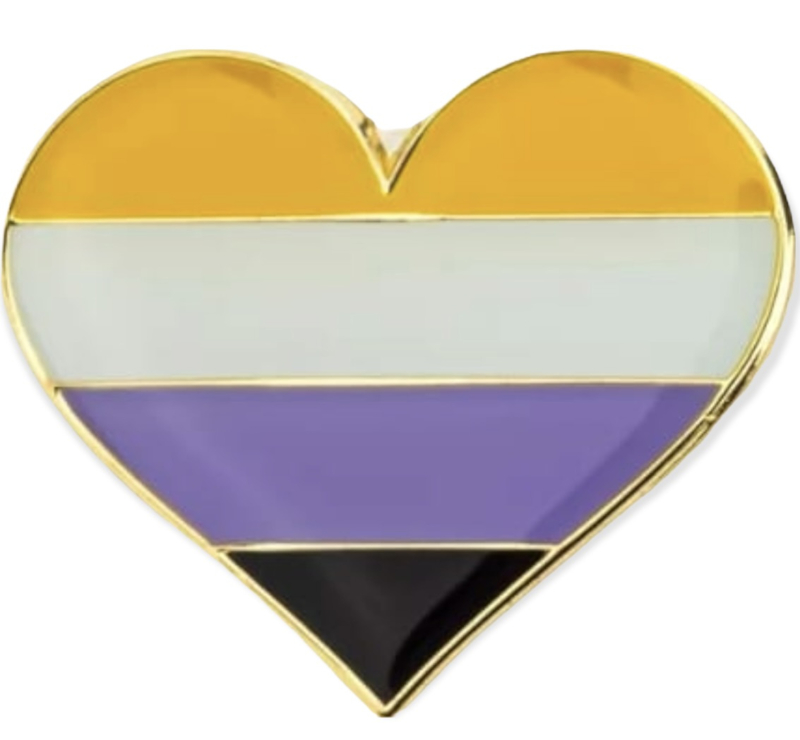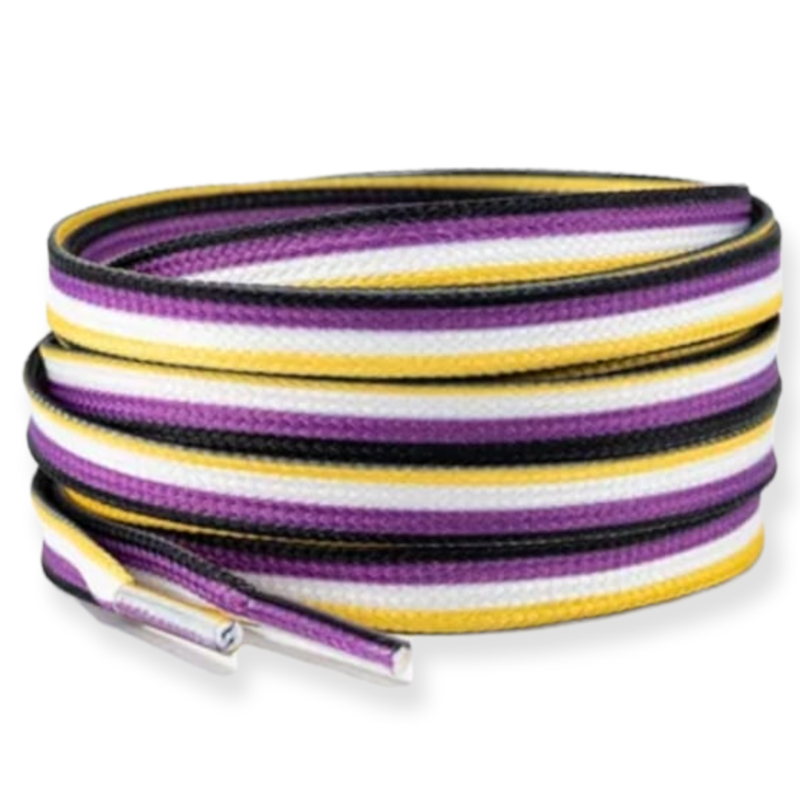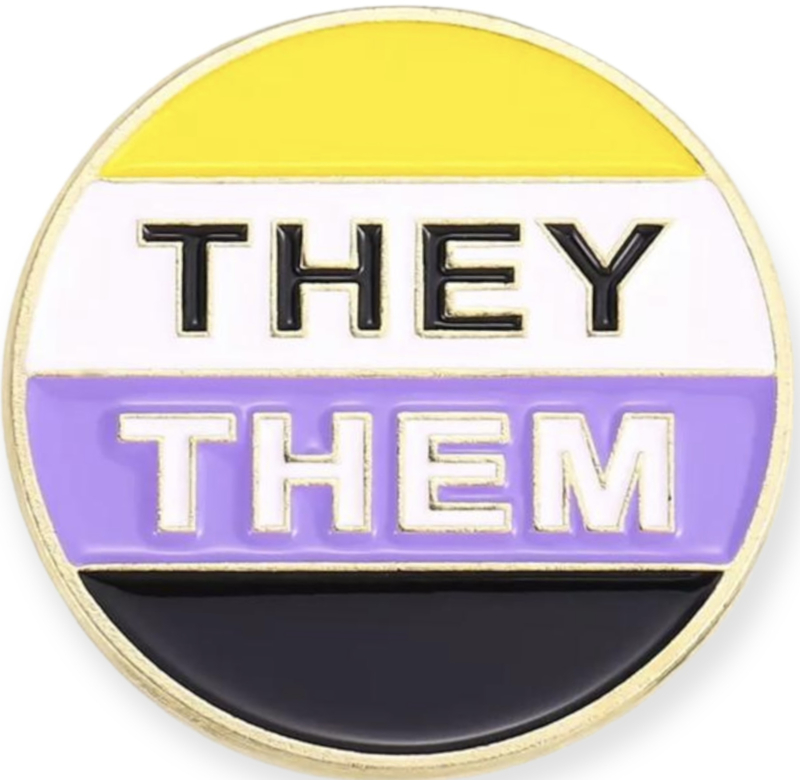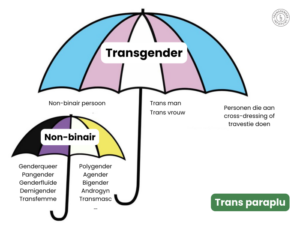What is non-binary?
To answer the question above, it’s important to first understand the difference between gender identity and sex. This will be explained below.
What is the difference between gender identity and sex?
It’s important to remember that gender identity is different from biological sex or sexual orientation. Gender identity refers to how a person internally feels and how they see themselves in terms of gender. The difference between gender identity and sex is a key concept in gender studies and relates to how people experience themselves versus their biological characteristics.
Sex (or biological sex) refers to the physical and biological attributes with which a person is born, such as chromosomes, hormones, reproductive organs, and secondary sexual characteristics. Traditionally, sex is categorized as male or female based on these physical traits.
Gender identity refers to how a person internally experiences and identifies in terms of gender. It is the inner sense of being male, female, a combination of both, neither, or somewhere on the spectrum between these extremes. Gender identity is personal and can range from the traditional binary categories of male and female to other identities, such as non-binary, genderfluid, agender, and more.
What is non-binary?
“Non-binary” is a term that refers to a gender identity that is not exclusively male or female. “Binary” refers to the division between male and female, while “non-binary” indicates that this division does not apply. People who identify as non-binary feel that their gender identity exists outside the traditional binary concept of gender (male or female). This can mean that they feel both male and female, neither, or that their gender identity fluctuates between or outside these categories.
What does it mean to be non-binary?
Being non-binary means that a person does not exclusively identify as male or female. Instead, their gender identity may lie somewhere between the traditional binary categories of male and female, be a combination of both, or exist entirely outside these categories. Non-binary individuals may identify as genderfluid, agender, bigender, or genderqueer, but the specific terms and experiences can vary greatly from person to person. Non-binary is, therefore, an umbrella term that can encompass various identities.
How do you know if you are non-binary?
Discovering whether you are non-binary is a personal journey that may require time, self-reflection, and possibly conversations with others. You can ask yourself questions to gain more clarity on this. How do you feel about traditional gender roles? Do you feel uncomfortable with traditional notions of masculinity and femininity? Maybe you feel that neither label fully fits how you see yourself. How do you identify internally? Reflect on how you feel about gender. Do you not feel entirely comfortable with the labels “man” or “woman”? Do you feel that your identity fluctuates between these labels or that you fall outside these categories?
Further, you can:
- Experiment with gender expression: Try different forms of gender expression. This could range from changing your clothing style to trying out different pronouns. It can be helpful to see what feels comfortable and authentic for you.
- Talk to others: You might feel better expressing yourself in an environment where gender norms are less rigid. This can provide a safe space to explore your own gender identity.
- Read about non-binary experiences: It can be helpful to read articles, books, or personal stories from non-binary people to see if you recognize yourself in their experiences.
- See a gender therapist or counselor: Sometimes, talking to a professional who specializes in gender identity can help you sort through your thoughts and feelings.
- Give yourself time: Gender identity is complex and can evolve. It’s okay to take time to discover what feels right for you. You don’t have to choose a definitive label right away; the process of exploring and understanding is just as important.
- Observe your interactions with others: Do you feel uncomfortable when people make assumptions about your gender? Do you feel more like yourself when people approach you without adhering to binary gender norms?
Ultimately, discovering whether you are non-binary is about how you feel and identify. There is no “right” or “wrong” way to be non-binary. What matters is that you feel comfortable and authentic in your own skin.
What are important aspects of being non-binary?
What is the difference between non-binary, genderqueer, and transgender?
People often seek to understand the nuances between different terms and identities. Genderqueer is a broader term that is sometimes used synonymously with non-binary, but not always. While they overlap, there are subtle differences between the two.
Definition:
- Non-binary: Non-binary is an umbrella term used for gender identities that are not exclusively male or female. This can include identifying as a mix of both, neither, or as an identity that fluctuates between these categories.
- Genderqueer: Genderqueer is a broader and often more politically charged term used by people who identify with a gender identity outside the normative male-female divide. It can also indicate a rejection of societal norms around gender.
- Transgender: Transgender is an umbrella term for people whose gender identity does not align with the sex they were assigned at birth. For example, someone assigned female at birth who identifies as male is transgender.
Usage:
- Non-binary: Often used to describe gender in a way that specifically includes non-binary categories, such as genderfluid, agender, or bigender.
- Genderqueer: Can be seen as synonymous with non-binary but is also often used by people who see themselves as challenging traditional gender norms or who want to emphasize that their gender identity is not only non-binary but also actively deviates from traditional norms.
- Transgender: Includes both binary transgender people (men and women) and non-binary people. It’s about having a gender identity that differs from the one assigned at birth.
Focus:
- Non-binary: Emphasizes rejecting binary gender categories (male and female).
- Genderqueer: Places more emphasis on the activist or radical aspect of challenging gender norms. It can also be interpreted as more fluid and less strictly defined than non-binary.
- Transgender: Focuses on the difference between the gender assigned at birth and the person’s gender identity. Transgender can refer to people who identify as male or female, as well as those who do not fit within these binary categories.
Do non-binary people wear binders?
Yes, some non-binary people wear binders, but this depends on their personal gender identity and how they wish to present their bodies. A binder is a garment used to flatten the chest, and it is often worn by people who feel uncomfortable with the visibility of their chest, such as some transgender men and non-binary people.
Reasons non-binary people might wear binders:
- Gender dysphoria: Some non-binary people experience gender dysphoria, which is an uncomfortable feeling that arises when the body does not align with their gender identity. Wearing a binder can help alleviate this dysphoria by making the chest less visible.
- Gender expression: For some non-binary people, it is important to have an androgynous appearance, which is not distinctly male or female. Androgynous means a combination of male and female characteristics, both in appearance and behavior. A binder can help achieve a more gender-neutral or androgynous presentation.
- Personal comfort: Other non-binary people wear binders simply because they feel more comfortable in their bodies when their chest is less visible, without necessarily experiencing gender dysphoria.
Variation in binder use:
Not all non-binary people wear binders. Some find other ways to express their gender identity, such as through clothing, hairstyles, or other forms of self-expression. Wearing a binder is a personal choice and does not make any gender identity less valid.
It is also important that if you wear a binder, you do so safely to avoid health risks. You can read more about this in our blog “What is safe binding?”
In summary, wearing a binder is an option for non-binary people who feel more comfortable with a flatter chest, but it is not a requirement or something that every non-binary person does.
Do non-binary people wear compression shorts?
Yes, this also applies to compression shorts, and again, their use depends on personal preferences and needs. Compression shorts can be used to shape the lower body, for example, by adjusting the hips or thighs, or by tightening the area around the stomach. This can help create a body shape that better matches the person’s gender identity or expression.
As with binders, it is important that compression shorts are worn safely and comfortably to prevent discomfort or health issues. You can read more about this in our blog “What is responsible tucking?”
So, not all non-binary people wear compression shorts; it is a personal choice that depends on how someone feels most comfortable and authentic.

